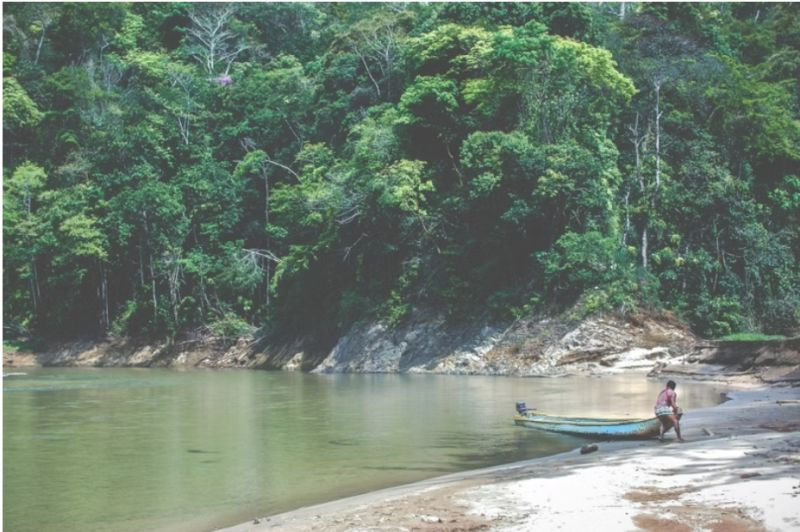When Travel Styles Become Strategies: Can Sustainability Be Made Aspirational?
- Minu Chawla
- Aug 21
- 2 min read



I have this quirky habit of naming my travel styles, like they’re destined to headline travel magazines someday (wishful thinking, I know!). Shaped by experiences and the ever-changing world, my travel preferences have evolved over the years.
As a child, I was inspired by Justine Shapiro, Megan McCormick, and Ian Wright to set out on solo adventures - a journey that began in 2006 and continues to this day. Over time, I layered in my love for photography, and my trips became what I call 𝗖𝗮𝗺𝗲𝗿𝗮-𝗹𝗲𝗱 𝘁𝗿𝗮𝘃𝗲𝗹, capturing bustling streets, vibrant chaos and cultural idiosyncrasies with my camera.
There was also a phase of 𝗽𝗮𝗻𝗶𝗰 𝘁𝗿𝗮𝘃𝗲𝗹 - a mad dash to places on the brink of losing their essence. In 2016, I rushed to Cuba right after President Obama announced easing the embargo, eager to experience its unfiltered charm before McDonalds arrived. Later that year, Tromsø, Norway and its waning aurora activity compelled me to plan that New Years trip.
Eventually, every destination began feeling like déjà vu. Bali in 2017 was very different, disappointingly so, from Bali in 2010. Moving to India and navigating high-density transport and experiences prompted my next shift. Now, it’s all about escaping the crowds and reconnecting with nature. This led to 𝗹𝗼𝘄-𝗽𝗼𝗽𝘂𝗹𝗮𝘁𝗶𝗼𝗻 𝗱𝗲𝗻𝘀𝗶𝘁𝘆 𝘁𝗿𝗮𝘃𝗲𝗹, starting with Spiti Valley some years ago. And more recently, 𝗰𝗮𝗿𝗯𝗼𝗻 𝘀𝗶𝗻𝗸 𝘁𝗼𝘂𝗿𝗶𝘀𝗺, driven by an almost-physiological need to lose myself in forests. The Covid mayhem and travel restrictions nudged me towards proximate travel and Agumbe - a few days in the King Cobra capital at a rainforest research station (despite my initial fear of snakes, which has since changed!). No wonder concepts like shinrin-yoku (forest bathing) have found their way into destination strategies I’ve worked on.
As a destination strategist, I often advise destinations to develop personalities inspired by these very ‘trends’ - even if, for now, they mostly exist in my head. Destinations need to embody these roles before they can be marketed further. But it’s a cyclical process: demand also shapes the profiles that destinations ultimately adopt.
And so, I wonder: 𝘋𝘰𝘦𝘴 𝘵𝘩𝘦 𝘢𝘯𝘴𝘸𝘦𝘳 𝘵𝘰 𝘴𝘶𝘴𝘵𝘢𝘪𝘯𝘢𝘣𝘭𝘦 𝘵𝘰𝘶𝘳𝘪𝘴𝘮 𝘮𝘢𝘳𝘬𝘦𝘵𝘪𝘯𝘨 𝘭𝘪𝘦 𝘪𝘯 𝘢𝘮𝘱𝘭𝘪𝘧𝘺𝘪𝘯𝘨 𝘱𝘳𝘢𝘤𝘵𝘪𝘤𝘦𝘴 𝘸𝘦 𝘸𝘢𝘯𝘵 𝘵𝘰 𝘴𝘦𝘦? 𝘊𝘢𝘯 𝘸𝘦 𝘮𝘢𝘬𝘦 𝘵𝘩𝘦𝘮 𝘵𝘳𝘦𝘯𝘥𝘴 𝘰𝘳 𝘣𝘢𝘯𝘥𝘸𝘢𝘨𝘰𝘯𝘴 𝘵𝘩𝘢𝘵 𝘱𝘦𝘰𝘱𝘭𝘦 𝘦𝘢𝘨𝘦𝘳𝘭𝘺 𝘫𝘶𝘮𝘱 𝘰𝘯, 𝘳𝘢𝘵𝘩𝘦𝘳 𝘵𝘩𝘢𝘯 𝘴𝘰𝘭𝘦𝘭𝘺 𝘢𝘱𝘱𝘦𝘢𝘭𝘪𝘯𝘨 𝘵𝘰 𝘵𝘩𝘦𝘪𝘳 𝘢𝘭𝘵𝘳𝘶𝘪𝘴𝘵𝘪𝘤, 𝘨𝘰𝘰𝘥 𝘴𝘦𝘭𝘷𝘦𝘴 𝘵𝘰 𝘰𝘷𝘦𝘳𝘤𝘰𝘮𝘦 𝘱𝘳𝘪𝘤𝘦 𝘴𝘦𝘯𝘴𝘪𝘵𝘪𝘷𝘪𝘵𝘺 𝘰𝘳 𝘤𝘰𝘯𝘷𝘦𝘯𝘪𝘦𝘯𝘤𝘦? 𝘊𝘢𝘯 𝘸𝘦 𝘳𝘦𝘧𝘳𝘢𝘮𝘦 𝘴𝘶𝘴𝘵𝘢𝘪𝘯𝘢𝘣𝘪𝘭𝘪𝘵𝘺 𝘢𝘴 𝘴𝘰𝘮𝘦𝘵𝘩𝘪𝘯𝘨 𝘢𝘴𝘱𝘪𝘳𝘢𝘵𝘪𝘰𝘯𝘢𝘭 𝘢𝘯𝘥 (𝘐𝘯𝘴𝘵𝘢𝘨𝘳𝘢𝘮) ‘𝘵𝘳𝘦𝘯𝘥𝘺’, 𝘸𝘩𝘪𝘭𝘦 𝘴𝘰𝘮𝘦𝘩𝘰𝘸 𝘦𝘴𝘤𝘩𝘦𝘸𝘪𝘯𝘨 𝘵𝘩𝘦 𝘱𝘪𝘵𝘧𝘢𝘭𝘭𝘴 𝘰𝘧 𝘐𝘯𝘴𝘵𝘢𝘨𝘳𝘢𝘮 𝘷𝘪𝘳𝘢𝘭𝘪𝘵𝘺?




Comments